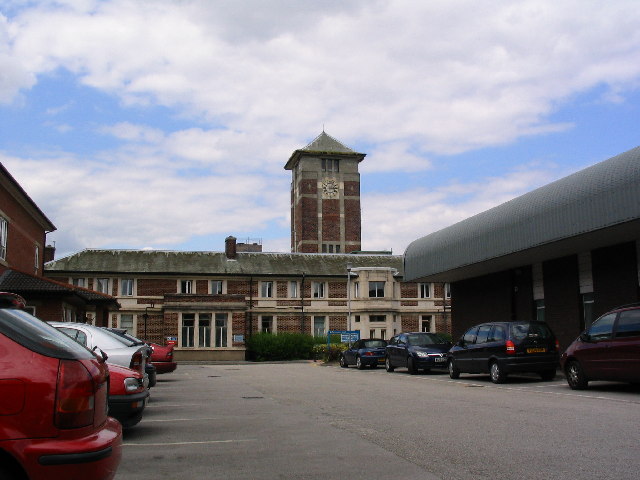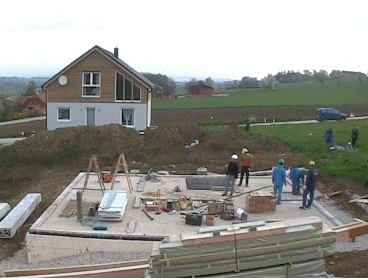|
Local Authority Housing
A council house is a form of British public housing built by local authorities. A council estate is a building complex containing a number of council houses and other amenities like schools and shops. Construction took place mainly from 1919 after the Housing Act 1919 to the 1980s, with much less council housing built since then. There were local design variations, but they all adhered to local authority building standards. The Housing Acts of 1985 and 1988 facilitated the transfer of council housing to not-for-profit housing associations with access to private finance, and these new housing associations became the providers of most new public-sector housing. By 2003, 36.5% of the social rented housing stock was held by housing associations. History House design in the United Kingdom is defined by a series of Housing Acts, and public housing house design is defined by government directives and central governments' relationship with local authorities. From the first intervention ... [...More Info...] [...Related Items...] OR: [Wikipedia] [Google] [Baidu] |
Tudor Walters Report
The Tudor Walters Report on housing was produced by the Tudor Walters Committee of the United Kingdom Parliament in November 1918. Its recommendation set the standards for council house design and location for the next 90 years. The committee Tudor Walters was the chairman, Raymond Unwin architect to Letchworth Garden City and Hamstead Garden Suburb was a member. The background In 1912 Raymond Unwin published a pamphlet ''Nothing gained by Overcrowding'', outlining the principles of the Garden City. The Local Government Board in 1912 had recommended that: Cottages for the working classes should be built with wider frontages and grouped around open spaces which would become recreation grounds, they should have three bedrooms, a large living room, a scullery fitted with a bath and a separate WC to each house with access under cover The published five model plans. Two had an additional parlour, four were terraced and one was semi detached. They had an area to . The First World War ... [...More Info...] [...Related Items...] OR: [Wikipedia] [Google] [Baidu] |
Attlee Ministry
Clement Attlee was invited by King George VI to form the Attlee ministry in the United Kingdom in July 1945, succeeding Winston Churchill as Prime Minister of the United Kingdom. The Labour Party had won a landslide victory at the 1945 general election, and went on to enact policies of what became known as the post-war consensus, including the establishment of the welfare state and the nationalisation of some industries. The government's spell in office was marked by post-war austerity measures, the violent crushing of pro-independence and communist movements in Malaya, the grant of independence to India, the engagement in the Cold War against Soviet Communism as well as the creation of the country's National Health Service (NHS). Attlee went on to win a narrow majority of five seats at the 1950 general election, forming the second Attlee ministry. Just twenty months after that election, Attlee called a new election for 25 October 1951 in an attempt to gain a larger m ... [...More Info...] [...Related Items...] OR: [Wikipedia] [Google] [Baidu] |
World War II
World War II or the Second World War, often abbreviated as WWII or WW2, was a world war that lasted from 1939 to 1945. It involved the vast majority of the world's countries—including all of the great powers—forming two opposing military alliances: the Allies and the Axis powers. World War II was a total war that directly involved more than 100 million personnel from more than 30 countries. The major participants in the war threw their entire economic, industrial, and scientific capabilities behind the war effort, blurring the distinction between civilian and military resources. Aircraft played a major role in the conflict, enabling the strategic bombing of population centres and deploying the only two nuclear weapons ever used in war. World War II was by far the deadliest conflict in human history; it resulted in 70 to 85 million fatalities, mostly among civilians. Tens of millions died due to genocides (including the Holocaust), starvation, ma ... [...More Info...] [...Related Items...] OR: [Wikipedia] [Google] [Baidu] |
Prefabricated House
Prefabricated homes, often referred to as prefab homes or simply prefabs, are specialist dwelling types of prefabricated building, which are manufactured off-site in advance, usually in standard sections that can be easily shipped and assembled. Some current prefab home designs include architectural details inspired by postmodernism or futurist architecture. "Prefabricated" may refer to buildings built in components (e.g. panels), modules (modular homes) or transportable sections (manufactured homes), and may also be used to refer to mobile homes, i.e., houses on wheels. Although similar, the methods and design of the three vary widely. There are two-level home plans, as well as custom home plans. There are considerable differences in the construction types. In the U.S., mobile and manufactured houses are constructed in accordance with United States Department of Housing and Urban Development, HUD building codes, while modular houses are constructed in accordance with the IRC (In ... [...More Info...] [...Related Items...] OR: [Wikipedia] [Google] [Baidu] |
Burt Committee
The Burt Committee was a working party set up by the government of the United Kingdom during World War II to provide guidance on the housing shortage. The committee had the correct title of the ''Interdepartmental Committee on House Construction''. It was established in September 1942 by the Minister of Health, the Minister of Works and the Secretary of State for Scotland. The committee was briefed to consider which methods and materials would be most cost-effective and efficient for providing houses after war damage in The Blitz and slum clearance had left many homeless. The committee favoured prefabricated housing as a solution to the problems, and their recommendations resulted in the Housing (Temporary Accommodation) Act 1944, which itself resulted in the Emergency Factory Made Prefabs (prefabricated homes) were a major part of the delivery plan to address the United Kingdom's post–Second World War housing shortage. They were envisaged by war-time prime minister Winston Ch ... [...More Info...] [...Related Items...] OR: [Wikipedia] [Google] [Baidu] |
Prefabs In The UK
Prefabs (prefabricated homes) were a major part of the delivery plan to address the United Kingdom's post–Second World War housing shortage. They were envisaged by war-time prime minister Winston Churchill in March 1944, and legally outlined in the Housing (Temporary Accommodation) Act 1944. Taking the details of the public housing plan from the output of the Burt Committee formed in 1942, the wartime coalition government under Churchill proposed to address the need for an anticipated 200,000 shortfall in post-war housing stock, by building 500,000 prefabricated houses, with a planned life of up to 10 years, within five years of the end of the Second World War. The Housing (Temporary Accommodation) Act 1944 aimed to deliver 300,000 units within 10 years, within a budget of £150 million. Through use of the wartime production facilities and creation of common standards developed by the Ministry of Works, the programme got off to a good start and, of 1.2 million new houses built ... [...More Info...] [...Related Items...] OR: [Wikipedia] [Google] [Baidu] |
Housing (Temporary Accommodation) Act 1944
The Housing (Temporary Accommodation) Act 1944 is an Act of the Parliament of the United Kingdom (7 & 8 Geo. VI c. 36) which was passed in order to provide solutions to the housing crisis which occurred at the end of World War II. The Act was the responsibility of the Ministry of Reconstruction, and came in response to the recommendations of the Burt Committee, which had been established in 1942. The Government aimed to provide enough homes for each family who required an individual dwelling, which it perceived had been the situation in 1939 prior to the outbreak of war. However, the Blitz had rendered some 450,000 homes either completely destroyed or uninhabitable. A secondary intention of the act was the completion of the pre-war slum clearance project. The Act provided for a number of strategies to solve the housing crisis: * An increase in the labour force of the building industry to pre-war levels of over 1 million * The construction of at least 300,000 homes during the two ... [...More Info...] [...Related Items...] OR: [Wikipedia] [Google] [Baidu] |
Dwellings Completed In England 1946-2015
In law, a dwelling (also known as a residence or an abode) is a self-contained unit of accommodation used by one or more households as a home - such as a house, apartment, mobile home, houseboat, vehicle, or other "substantial" structure. The concept of a dwelling has significance in relation to search and seizure, conveyancing of real property, burglary, trespass, and land-use planning. Legal definitions Legal definitions vary by jurisdiction. 'Dwelling' (England and Wales) Under English law, a dwelling is defined as a self-contained 'substantial' unit of accommodation, such as a building, part of a building, caravan, houseboat or other mobile home. A tent is not normally considered substantial. 'Dwelling' (North Carolina) According to North Carolina General Statute § 160A-442, "Dwelling" means any building, structure, manufactured home or mobile home, or part thereof, used and occupied for human habitation, or intended to be so used, and includes any outhouses and appurten ... [...More Info...] [...Related Items...] OR: [Wikipedia] [Google] [Baidu] |
Second World War
World War II or the Second World War, often abbreviated as WWII or WW2, was a world war that lasted from 1939 to 1945. It involved the vast majority of the world's countries—including all of the great powers—forming two opposing military alliances: the Allies and the Axis powers. World War II was a total war that directly involved more than 100 million personnel from more than 30 countries. The major participants in the war threw their entire economic, industrial, and scientific capabilities behind the war effort, blurring the distinction between civilian and military resources. Aircraft played a major role in the conflict, enabling the strategic bombing of population centres and deploying the only two nuclear weapons ever used in war. World War II was by far the deadliest conflict in human history; it resulted in 70 to 85 million fatalities, mostly among civilians. Tens of millions died due to genocides (including the Holocaust), starvation, ma ... [...More Info...] [...Related Items...] OR: [Wikipedia] [Google] [Baidu] |
Housing Act 1935
The Housing Act 1935 is an Act of Parliament in the United Kingdom. It required every local authority to submit a programme of building and demolition aimed at eliminating slums from their area. References United Kingdom Acts of Parliament 1935 Housing legislation in the United Kingdom {{UK-statute-stub ... [...More Info...] [...Related Items...] OR: [Wikipedia] [Google] [Baidu] |
Housing Act 1930
The Housing Act 1930, 20 & 21 George 5 c.39, otherwise known as the Greenwood Act, is an Act of Parliament in the United Kingdom. It encouraged mass slum clearance and councils to set to work to demolish poor quality housing and replace it with new build. Subsidies for general housing, were given, these were calculated on the number of people rehoused not the number of properties demolished. ' Back to back' housing had finally ended. Context The recession was ending: this was an Act of a Labour government, The minister to steer it through the house was Arthur Greenwood Arthur Greenwood, (8 February 1880 – 9 June 1954) was a British politician. A prominent member of the Labour Party from the 1920s until the late 1940s, Greenwood rose to prominence within the party as secretary of its research department f .... References External links Text of the Housing Act 1930Parliamentary Debates on the Housing Act 1930 in Hansard United Kingdom Acts of Parliament 1930 Hou ... [...More Info...] [...Related Items...] OR: [Wikipedia] [Google] [Baidu] |




